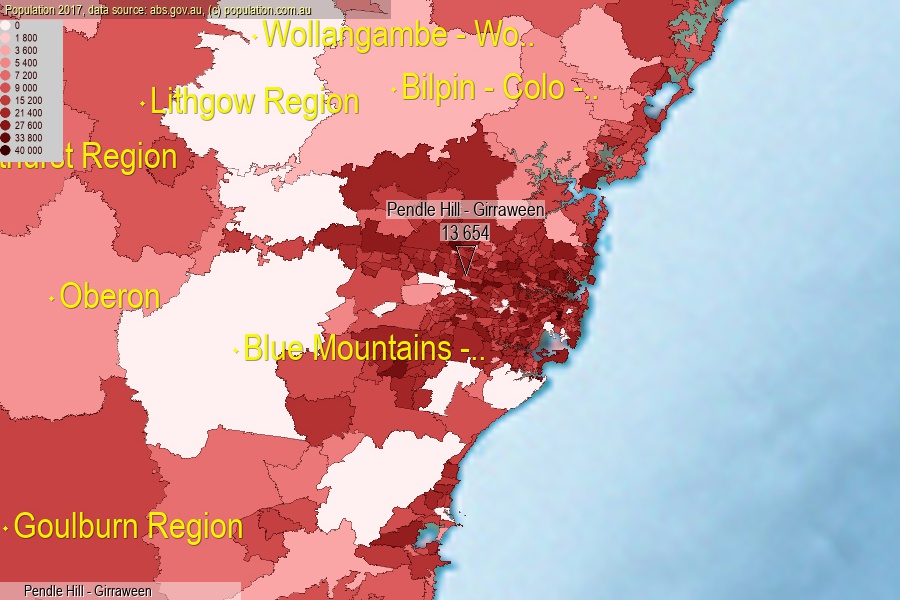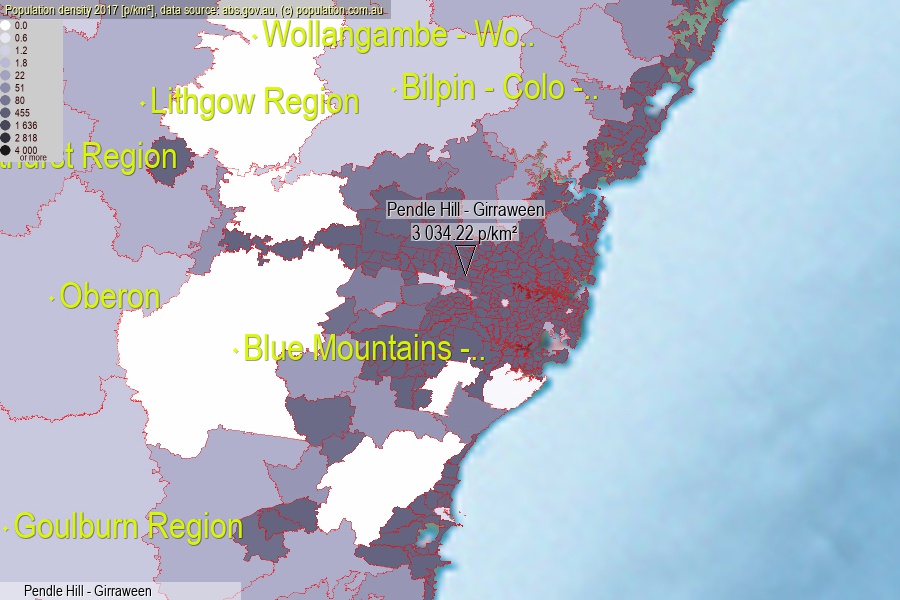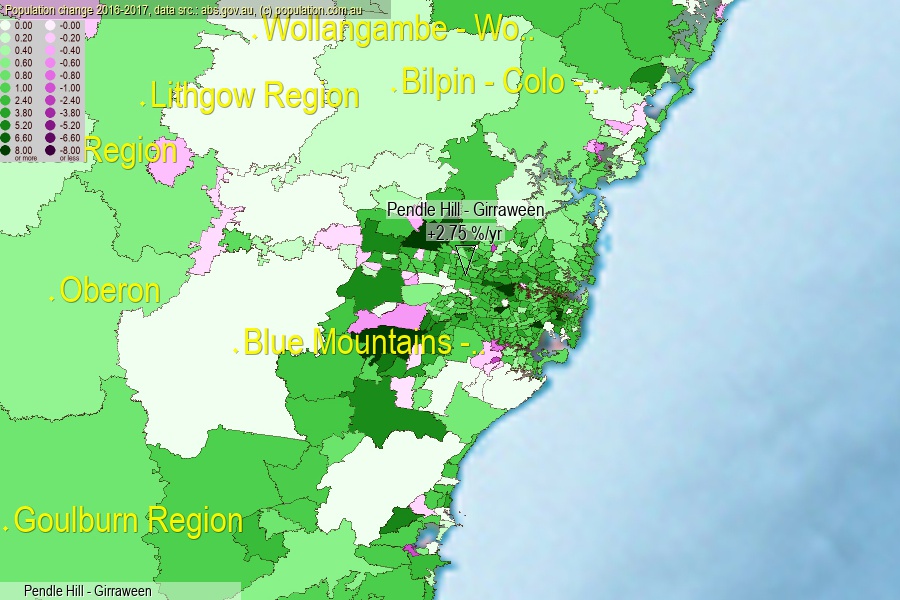 population.com.au
population.com.auLast official estimated population of Pendle Hill - Girraween (as Statistical Area Level 2) was 13 654 people (on 2017-06-30)[2]. This was 0.06% of total Australian population and 0.172% of NSW population. Area of Pendle Hill - Girraween is 4.50 km², in this year population density was 3 034.22 p/km² . If population growth rate would be same as in period 2016-2017 (+2.75%/yr), Pendle Hill - Girraween population in 2025 would be 16 959. [0]



Click to enlarge. Pendle Hill - Girraween is located in the center of the images.
Population [people], population density [p./km²] and population change [%/year] [2]
View borders » (new window) [4]
[2001-2002] +1.06 %/Yr.
[2002-2003] +1.25 %/Yr.
[2003-2004] +1.10 %/Yr.
[2004-2005] +1.63 %/Yr.
[2005-2006] +2.56 %/Yr.
[2006-2007] +4.15 %/Yr.
[2007-2008] +3.61 %/Yr.
[2008-2009] +1.35 %/Yr.
[2009-2010] +2.73 %/Yr.
[2010-2011] +2.01 %/Yr.
[2011-2012] +1.85 %/Yr.
[2012-2013] +2.98 %/Yr.
[2013-2014] +1.86 %/Yr.
[2014-2015] +1.35 %/Yr.
[2015-2016] +2.08 %/Yr.
[2016-2017] +2.75 %/Yr.
[0] Calculated with linear interpolation from officially estimated population
[1] Read more about SA2 and Australian Statistical Geography Standard (ASGS) on abs.gov.au
[2] Population data from Australian Bureau of Statistics (Population and density: 2017; change: 2016-2017)
[3] Digital Boundaries: Australian Statistical Geography Standard (ASGS) 2016.
[4] Border coordinates are simplifyed using Ramer-Douglas-Peucker algorithm.